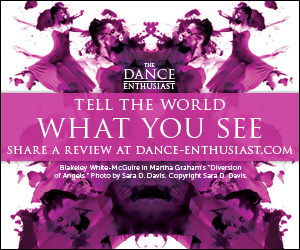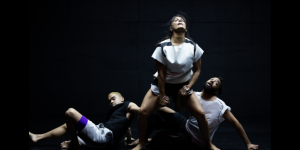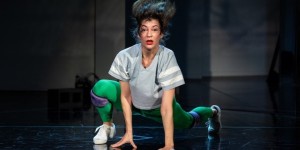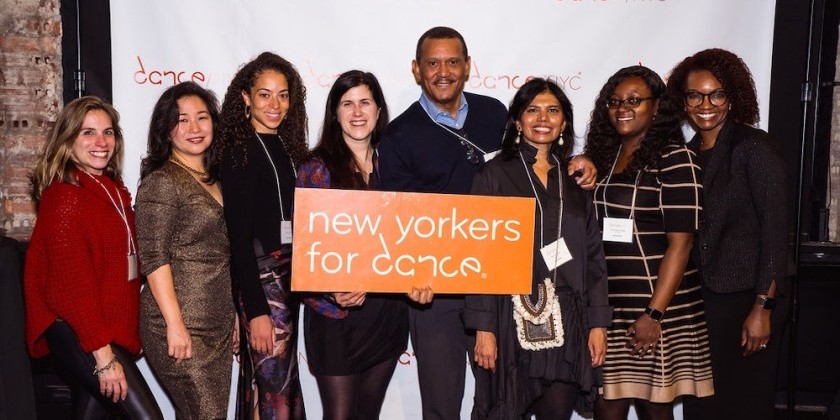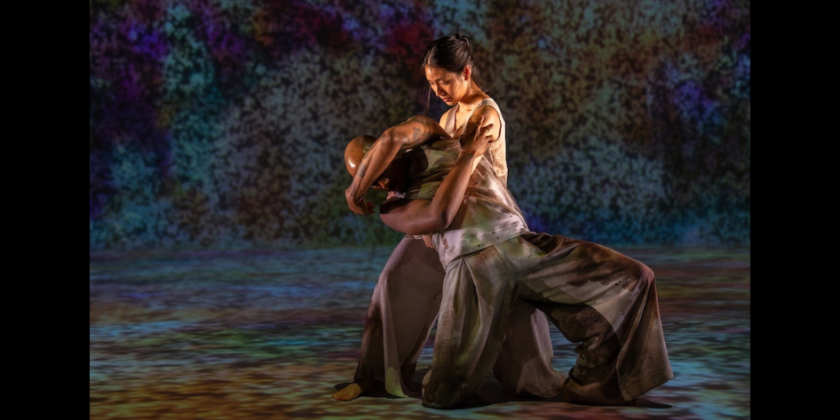Impressions of: Dance Heginbotham’s “Dark Theater" at BAM Fisher

Presented by the Brooklyn Academy of Music as part of the 2013 Next Wave Festival
Choreography by: John Heginbotham
Music composed by: Eric Satie
Music Performed by: Yegor Shevtsov
Lighting by: Nicole Pearce
Costumes by: Maile Okamura
Performed by: Winston Dynamite Brown, John Eirich, Kristen Foote, Lindsey Jones, Courtney Lopes, Weaver Rhodes, Sarah Stanley
Dance Heginbotham’s newest work bears testament to the strange and wonderful mind of John Heginbotham. Simultaneously playful and sinister, the two-part Dark Theater unravels an absurd universe that exists as much in our imaginations as it does onstage.
The central inspiration for Dark Theater is the avant-garde ballet score by Eric Satie entitled Relache, French for “dark night” (a night when performances are cancelled in theaters). This enigmatic composition glazes the piece with a mysterious tone.
Heginbotham uses the immersive and flexible Fisher Theater at BAM to his advantage by exploring realms of ceiling and basement. As a result, each audience member experiences the work from a unique perspective.

"Cinema," the opening section, transports us to the beginnings of time. Six long-legged dancers, clad in highlighter green unitards, resemble strange amphibian creatures. Darting about the stage with spectacular agility, their hands flip like vestigial fins. They communicate in a language of complex, quirky gestures reminiscent of the social interactions of insects. A calm oasis amidst this flurry of movement, Lindsey Jones pauses in a pristine back attitude and slowly promenades on one leg while the others spiral around her.

As the alien creatures disappear, a spotlight highlights the stage’s center, and a piano floats down from above like something out of a Dali painting. To our relief, it lands solidly, and Yegor Shevtsov saunters to the stage and seats himself. “Rose Cross,” the second section of the piece, has begun. Lifting his hands in a gesture of preparation in the dimming lights, he begins to play, leaving us alone in the dark to create our own story in this dreamlike world.

The movement vocabulary of this second episode mimics that of “Cinema,” yet these creatures are no longer green atoms moving arbitrarily. They have evolved into something more complex. It becomes clear there is an established hierarchy, with dancer Kristen Foote as the graceful leader. A dynamically engaging solo from the lithe and elegant Foote asserts her stature. Quirky gestures — a thumb in the mouth, a hand on the belly — intersperse her whirling, sweeping movement.

Then, in one frightening and awe-inspiring moment, a floating figure high on the catwalk stands up. It is dancer Sarah Stanley. Her body is suddenly full of power and life. Stanley transforms into a goddess, looking over this strange little community of dancers and audience.The others watch intently as she shuffles and pirouettes. Then, as mysteriously as she arrived, she disappears, and we find ourselves abruptly engulfed in darkness. The dream has ended.

With abundant room for interpretation, Dark Theater allows each audience member their own experience. Heginbotham offers his work up to our imaginations where we can play with separating fantasy from reality.
Follow Theodora Boguszewski @TheoBoguszweski on Twitter



